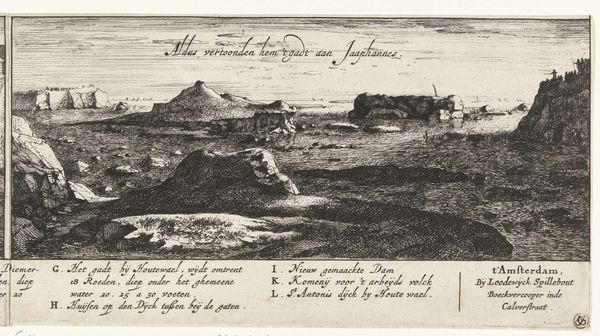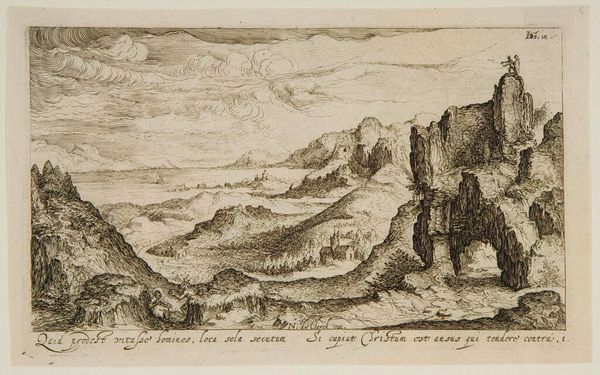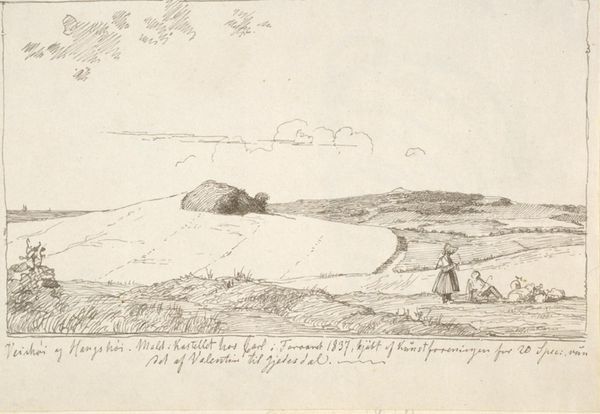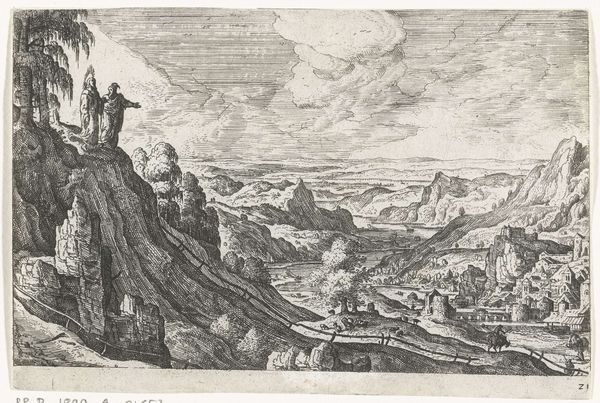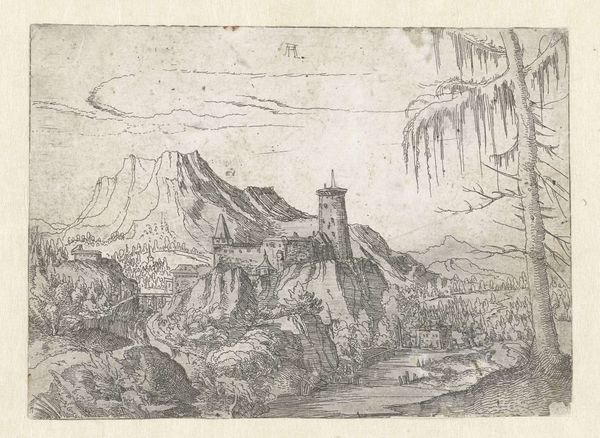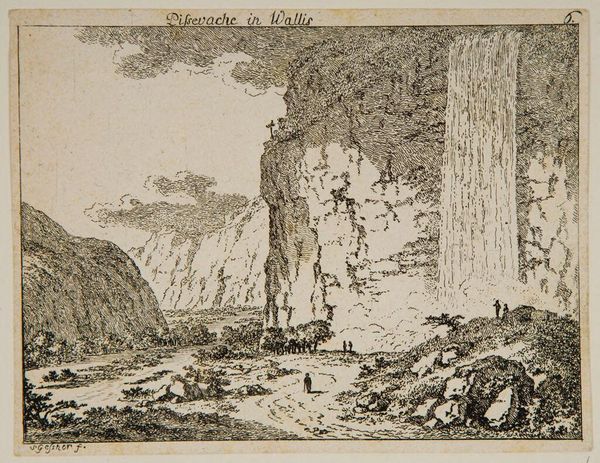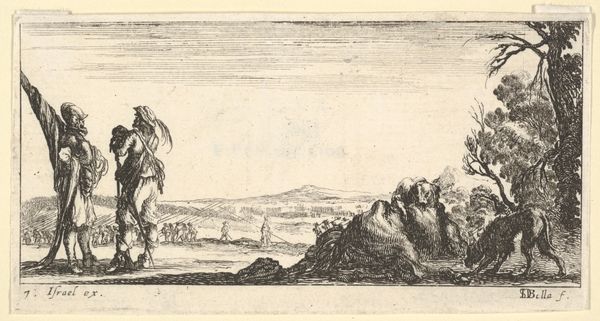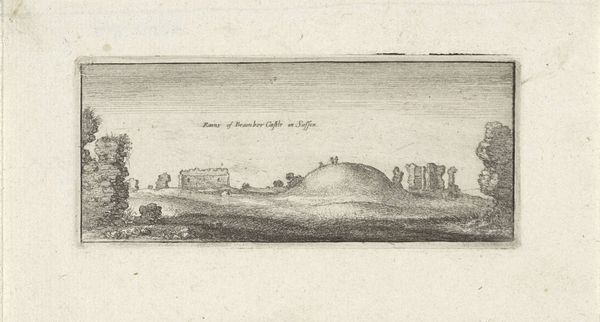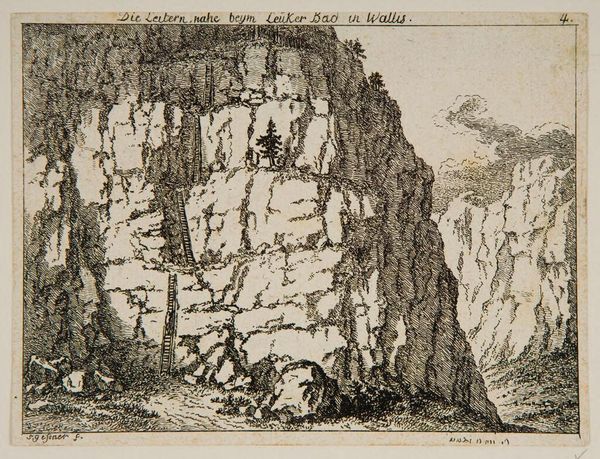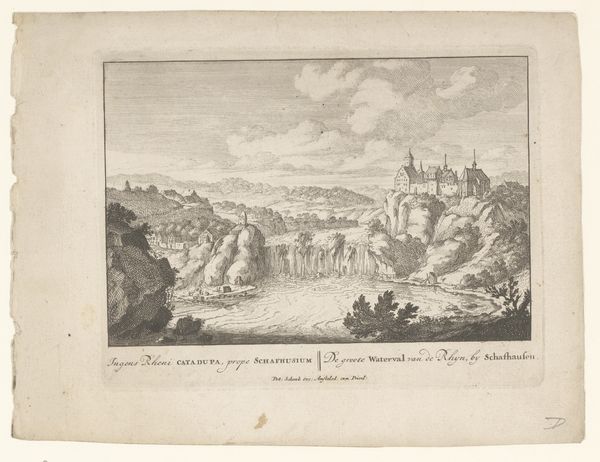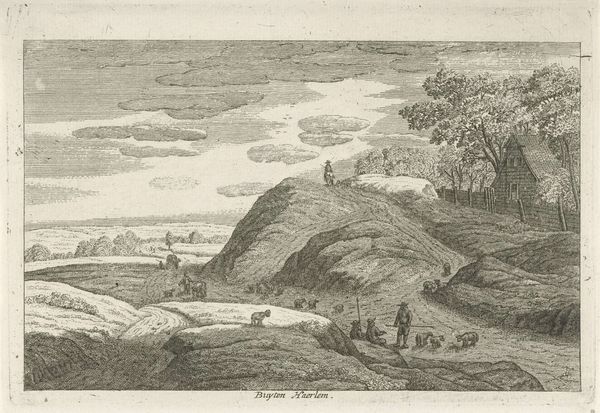
print, etching, engraving
#
narrative-art
#
baroque
#
dutch-golden-age
# print
#
etching
#
old engraving style
#
landscape
#
line
#
cityscape
#
engraving
#
realism
Dimensions: height 137 mm, width 255 mm
Copyright: Rijks Museum: Open Domain
Editor: Here we have Roelant Roghman's engraving, "Het doorbreken van de Sint-Antoniesdijk bij Houtewael, 1651," which depicts a breached dike. The detail achieved through etching is quite striking. How do you read this work? Curator: For me, the crucial element here is labor. We see a representation of disaster, but it's vital to consider the human activity, the immense labor involved in constructing and maintaining these dikes in the first place. Editor: Right, dikes aren’t natural formations, it's all human-made, and required coordination… Curator: Exactly! This engraving doesn’t just show a dramatic event, it implicitly acknowledges the vast social and material effort required to create the landscape in the first place. Think of the tools and techniques used, the communities organized around this engineering feat, the financial resources deployed... Editor: So you're saying we shouldn't just see a broken dike but a fractured social contract of sorts? A failure of the labor and investment poured into this landscape? Curator: Precisely. Look closely at the tiny figures observing the breach – what does their presence signify about the social and economic consequences? Furthermore, the act of creating this print itself, etching and engraving, involved a specific type of skilled labor within a particular economic system. The production of the image itself highlights a network of labor, materiality, and consumption. Editor: That's a powerful connection. It makes you consider the impact beyond just the visual representation of the event. Curator: Indeed. Understanding art involves examining these systems of production and the socio-economic context in which they exist. We move beyond appreciating just the surface, considering what truly sustains its creation and circulation. Editor: I never thought about the socio-economic factors of dike construction when looking at art before, thanks!
Comments
No comments
Be the first to comment and join the conversation on the ultimate creative platform.
